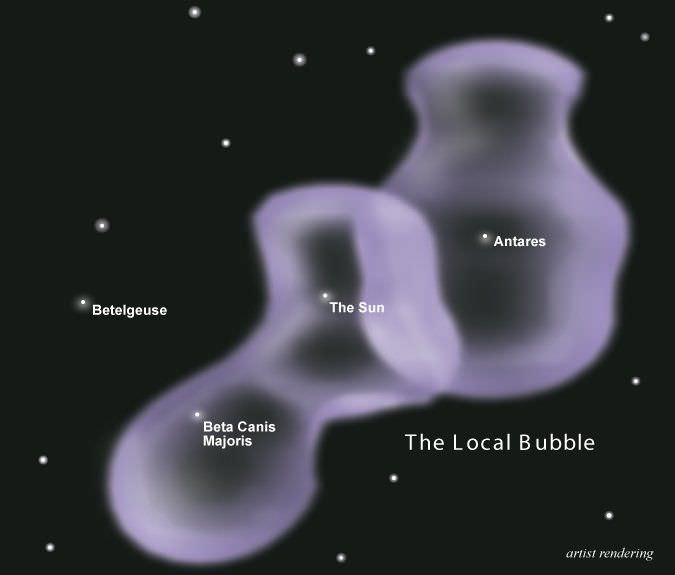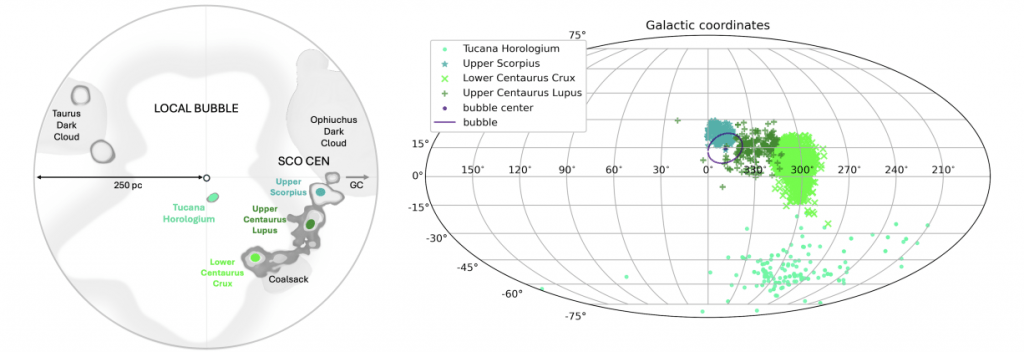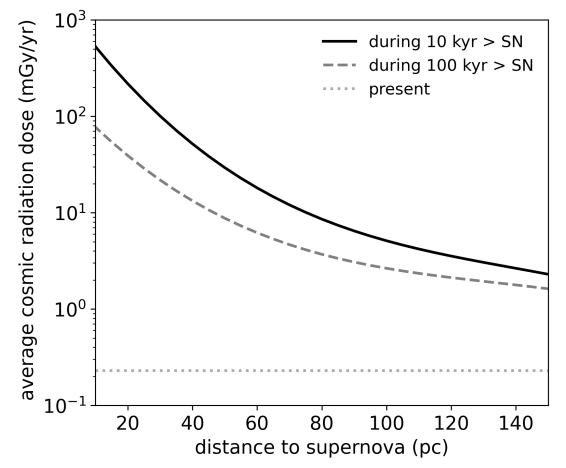When a massive star explodes as a supernova, it does more than release extraordinary energy.
Supernovae explosions are responsible for the creation of some heavy matter, including iron, which is blasted into space by explosions.
On Earth, there are two collections of the iron isotope Fe60 in surface sediments that scientists dated back to about two or three million years ago and about five to six million years ago.
The explosions that created the iron also caused cosmic radiation to damage the Earth.
And the new research is set to Astrophysical Lettersscientists are investigating how their energy reached the earth from these explosions and how the radiation can affect life on Earth.
The paper is titled “Life in the Bubble: How a nearby supernova left an ephemeral mark on the cosmos and the indelible elements of life.” Lead author is Caitlyn Nojiri from UC Santa Cruz.
“Life on Earth is constantly changing under continuous exposure to ionizing radiation from terrestrial and cosmic sources,” the authors wrote.
Planetary radiation has been slowly decreasing over billions of years. But it’s not a radiation universe. The amount of cosmic radiation the Earth is exposed to varies as our Solar System moves through the galaxies.
“A nearby supernova (SN) activity can raise the radiation level on Earth by several orders of magnitude, which is expected to have a significant impact on the origin of life,” they wrote.
The authors explain that the two-million-year-old collection is directly from the supernova explosion, and the older collection is from when the Earth passed through the bubble.
The bubbles in the study’s name come from a type of star called OB stars. OB stars are massive, hot and short-lived stars that form in clusters.
These stars emit strong outflowing winds that create “bubbles” of hot gas in the core. Our solar system is contained within one of these bubbles, called the Local Bubble, which is nearly 1,000 light-years across and was formed millions of years ago.

The Earth entered the Bubble Zone about five or six million years ago, which explains the ancient Fe60 concentration. According to the authors, the small amount of Fe60 from two or three years ago came from a supernova.
“It is likely that the number of 60Fe is about 2-3 Myr from a supernova occurring in the Upper Centaurus Lupus Association and Scorpius Centaurus (~140 pc) or Tucana Horologium Association (~70 pc). Where ~ 5-6 It is likely that the Myr peak is attributed to the inflow of the Solar System from the bubble,” the authors wrote.

The Bubble Zone is not a quiet place. It took many supernovae to create it. The authors note that it took 15 SN explosions in the last 15 years to produce an LB.
“We know from reconstructions of LB history that at least 9 SNs exploded during the last 6 Myrs,” they write.
The researchers took all the data and calculated the amount of radiation from many SNe and LB.
“It is unclear what the biological effects of such radiation therapy would be,” they write, citing some possibilities.

Radiation therapy can be powerful enough to create double-strand breaks in DNA. This is a serious damage and can lead to chromosomal changes and even cell death. But there are other influences on the development of life on Earth.
“Double-strand breaks in DNA can lead to mutations and increases in species diversity,” the researchers wrote. A 2024 paper showed that “the rate of viral evolution in Africa’s Lake Tanganyika peaked 2-3 Myr ago.” Could this be connected to SN radiation?
“It will be interesting to better understand whether this could be due to the increase in the amount of air-radiation we predict will occur at that time,” the authors tease. .
SN radiation is not strong enough to cause destruction. But it can be strong enough to trigger other mutations, which can lead to many different types.
Radiation is often a part of the environment. It rises and falls as events occur and as the Earth moves through the galaxy. In some way, it must be part of the equation that created the diversity of life on our planet.
“Therefore, it is clear that cosmic radiation is a major factor in the environment when analyzing the viability and evolution of life on Earth, and the main question is about the threshold for radiation to be a good thing and it is harmful when considering the change of species,” the authors wrote in their conclusion.
Unfortunately, we do not understand exactly how radiation affects biology, what the thresholds may be, and how they may change over time.
“The threshold can be stabilized only by a clear understanding of the biological effects of cosmic radiation (especially muons dominated at ground level), which have not been widely investigated,” Nojiri and his colleagues wrote. .
Studies show that, whether we can see it in everyday life or not, or even if we know it or not, our universe is active role in the life of the Earth. SN radiation can affect rate of change at critical times during Earth’s history, helping to shape evolution.
Without a supernova explosion, life on Earth might be different. A lot of things had to go for us to be here. Perhaps in the past, supernova explosions play a role in the evolutionary chain that leads us.
This story was originally published by Universe Today. Read the first article.
#nearby #supernova #give #birth #variety #life #Earth